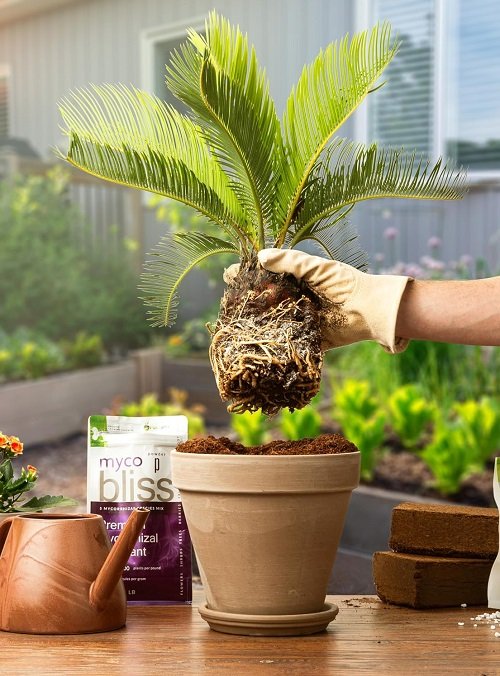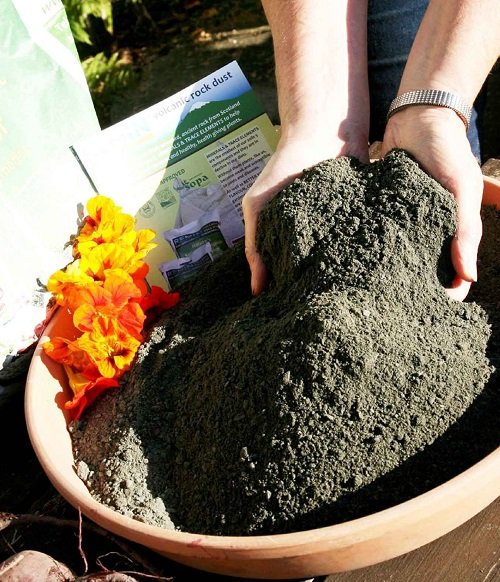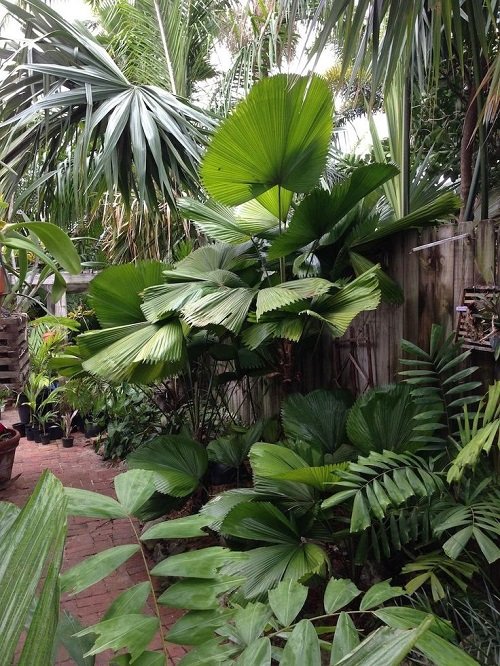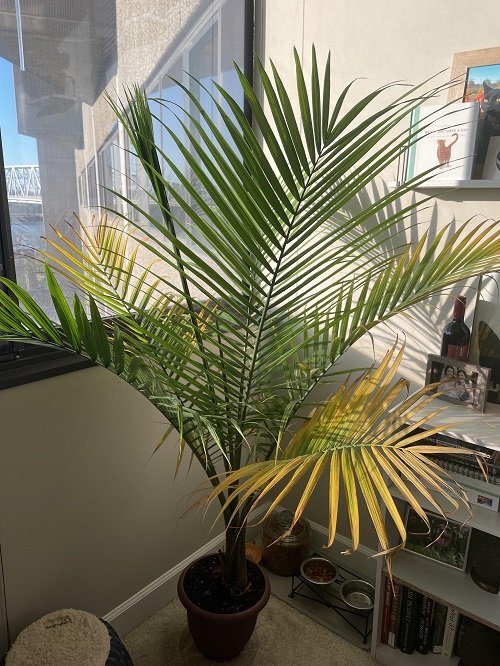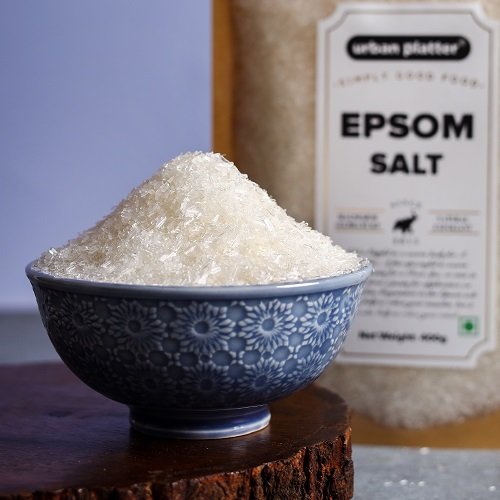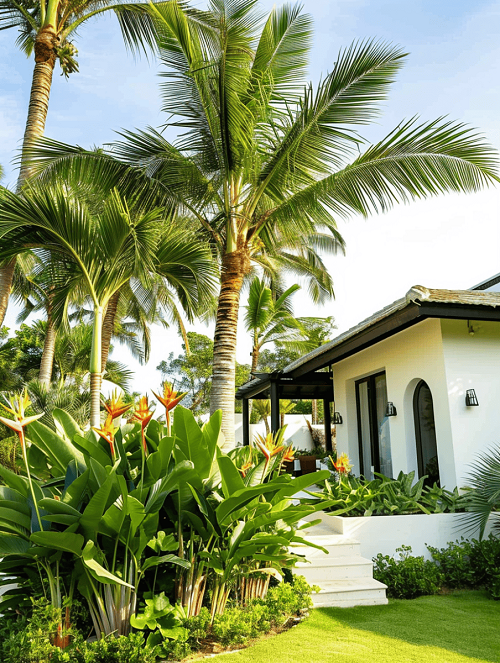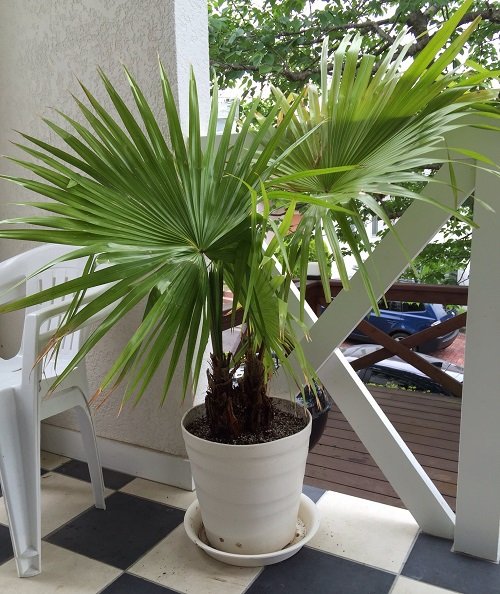Palms are easy to grow and maintain but can suffer from issues sometimes. These tips will help you to keep them thriving always!
Though palm trees are not that fussy, but they do suffer from slow growth and issues if you ignore certain maintenance pointers. Here are some tips to keep them at the best of their tropical beauty!
Best Palm Tree Growing Tips
1. Inoculate with Mycorrhizal Fungi
Inoculating young palm trees with mycorrhizal fungi will be a good call. It forms a team with the roots, making it easier for them to absorb water and nutrients.
When planting, use a special mycorrhizal fungi mix made for palms. Just follow the instructions on the product – mix it with water and pour over the roots or into the planting hole.
2. Add Pumice or Volcanic Rock Dust
Adding pumice or volcanic rock dust to the soil is a great way to help palms thrive. These help improve drainage and aeration by slowly releasing minerals like potassium and iron, which benefit palm health.
A good rule of thumb is to mix 1 part pumice or volcanic rock dust with 4 parts soil, but you might need to adjust this depending on the type of palm you have (Or read instructions on the label).
3. Create a Forest Floor Effect
This is particularly important and beneficial for garden palms.
To create a forest floor effect, start by spreading a layer of fallen leaves from your garden or aged compost. Make sure the layer is about 2-3 inches thick.
This layer acts like the natural forest floor, keeping moisture in, stopping weeds from growing, and providing nutrients to the soil when it decomposes.
Do remember to avoid piling the mulch directly against the trunk to prevent pest and disease issues. Every few months, add new mulch to keep it working well!
4. Mist Fronds in Hot, Dry Periods
This is especially true for indoor palms, especially if they are placed near windows. During hot, dry times, give their fronds a gentle mist with lukewarm water in the morning. This will boost humidity, cool the leaves, and keep pesky spider mites away!
You can use a spray bottle for this job, but do not go overboard – too much moisture might lead to mold/fungal growth. Once every 2-3 days would be sufficient.
5. Use Epsom Salt
For healthier fronds, using Epsom salt is a great way to keep them healthy. Mix 2 tablespoons of it in a gallon of water and use it to water the palm once a month – you can also use the solution as a foliar spray, once in 4-6 weeks.
6. Consider Companion Planting or Grow them Together
For outdoor palms, it would be a good idea to grow them with specimens having a similar light and water requirements, creating a micro-ecosystem.
Ferns, hostas, bromeliads, hibiscus, bird of paradise, ornamental grasses (Fountain grass, Purple millet), crotons, coneflowers and black-eyed Susans are the best options.
Growing multiple palms together outdoors or indoors (If you have space) is a good idea to create a mini microclimate (Grouping plants with similar sunlight and water requirements ensure they can coexist without competing for resources) to keep them healthy. It will also keep the humidity on the higher side, which benefits them a lot.
Quick Tips
7. Most palm trees do best in partial sunlight – so, it would be a good idea to keep them safe from harsh afternoon sun exposure, especially if you live in a warm climate.
8. Overwatering these plants is a big NO indoors! It can lead to root rot – Water only when the topsoil feels slightly dry to the touch.
9. For potted palm trees (Both, indoors and outdoors), go for Coarse Sand or Perlite (30-40%), Peat Moss or Coconut Coir (30-40%), and Organic Compost or Well-Rotted Manure (20-30%).
10. Use a balanced fertilizer, dilute it to 1/2 of its strength, and feed the palms every 4 to 5 weeks. Avoid fertilizing in colder months.
11. It is essential that you remove yellowing and brown fronds from time to time. Also, NEVER cut the crown of the plant.
12. Keep an eye out for pests like spider mites or scale insects. Ants can also be a problem for these plants.
13. For potted palms – it would be a good idea to go for at least 2 size bigger container than the root ball. This will give the roots enough space to grow and expand.



